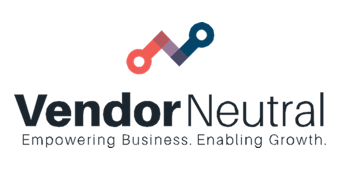When It Comes to Sales Technology, Prioritize Your Priorities
The Costly Mistake Businesses Are Making Every Day
When assessing and comparing sales technology for a business, a lot of people make the same critical mistake. This mistake is prevalent across verticals, industries, and business types, and it almost always ends up costing a considerable amount of time, effort, and money.
So, what’s this big mistake? It’s assuming that the sales technology is the first—not the absolute last—step in the tech acquisition process.
To get the most out of the tools you’re already using, follow this six-step plan.
Focus on Priorities and Capabilities before Features and Benefits
When thinking about adding a sales technology vendor to your stack, it’s easy to get caught up in a product’s bells and whistles—the advanced features and all the benefits they can provide. This is especially easy given technological tools have become indispensable, especially in the world of sales. Picking a tech solution based on those features and benefits, however, is coming at the problem backward.
When looking to invest in a new piece of technology, a company should always start from a strategic standpoint. In this case, that means identifying and mapping out your company’s most pressing priorities.
“If you’re not focusing on process and the priorities of an organization and then bringing an understanding of your capabilities to utilize these resources, you’re never going to enjoy an effective transition to a technology solution,” says Dan Cilley, CEO of Vendor Neutral.
Examples of Potential Priorities
The following are just some examples of priorities your company might identify:
- Obtain high-volume lead engagement
- Increase prospects with minimal salespeople
- Increase top-of-the-funnel leads
- Accurately track a decision-maker’s interest level
- Hold and present online meetings
- Gain faster access to relevant content collateral
- Facilitate electronic document signing
- Onboard new salespeople faster
Remember, every organization’s approach, challenges, and priorities are going to be unique. Over time, these priorities can even change within a given company. Whenever you’re looking to acquire new technological vendors, always revisit these priorities to ensure they’re still accurate and relevant to your current situation.
"For midmarket or enterprise companies, seeing the full picture of your priorities means you can select the most efficient technological solutions, opting for those vendors that address the greatest number of your needs."
Why Is It Problematic to Focus on Sales Tech Features First?
Jumping immediately to features and benefits without first assessing your priorities is a recipe for lost time and money.
Money
When you identify your priorities, you can also determine which are the most pressing. With this information, you can seek technological solutions that address your immediate needs. Rather than paying for a technology with more functionality than you need, you can target solutions with heightened precision—always with the knowledge you can amend your plan as you scale. This is especially helpful for smaller companies.
For midmarket or enterprise companies, seeing the full picture of your priorities means you can select the most efficient technological solutions, opting for those vendors that address the greatest number of your needs. By avoiding a litany of vendors, many with overlapping functionality, you can minimize your cost while still addressing all your relevant priorities.
Time
Comparing sales technology vendors requires time and research—even if you use a do-it-yourself solution like the Vendor Neutral selection tool, which matches companies to vendors based not on features but on priorities. When time is money, many businesses can’t afford to pick their sales tech solutions by trial and error, starting over every time it isn’t right. Jumping to features without the foundational strategy of your priorities leads many companies to this costly and time-consuming methodology.
“If you’re not focusing on process and the priorities of an organization and then bringing an understanding of your capabilities to utilize these resources, you’re never going to enjoy an effective transition to a technology solution,” says Dan Cilley, CEO of Vendor Neutral."
You’ve Identified Your Priorities. What’s Next?
Once you’ve determined the most pressing priorities for your business, the next step is aligning those priorities with vendors whose solutions address your needs. Rather than manually wading through the staggering number of sales tech options, use our quick, easy, priority-focused selector tool to ascertain what vendors address your specific problems.
When our analysts evaluate a vendor, it’s a deep dive through the lens of the priorities they address, not the features they offer. This means the matches you receive after using our selector tool are focused on addressing your self-identified priorities.
Feeling overwhelmed by the process of comparing sales technology and effectively selecting your sales tech stack? Feel free to reach out. Our consulting services are designed to help you assess your current tech stack, evaluate return on investment, and develop a road map for your company’s future.


